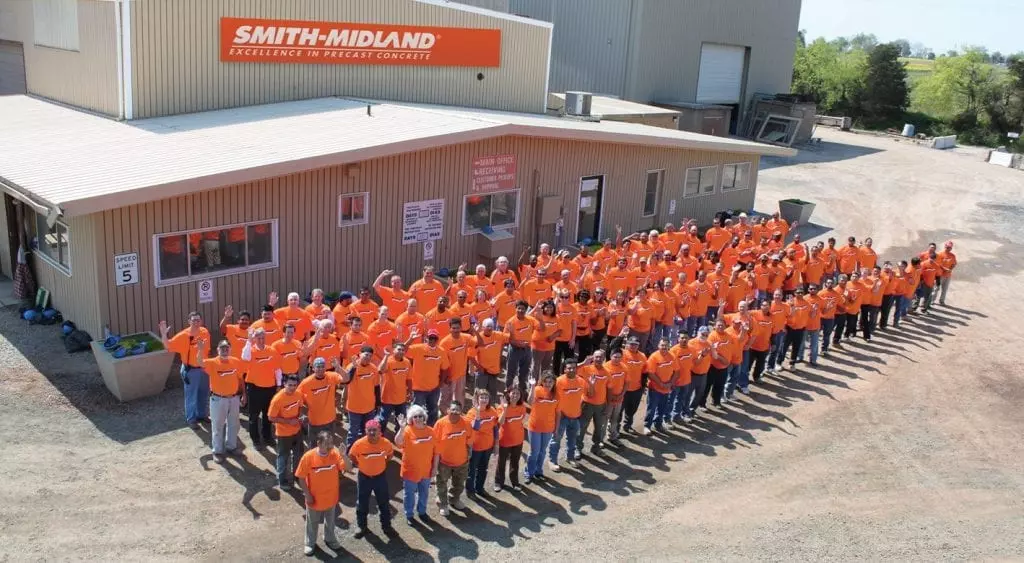Smith-Midland Corporation (NASDAQ: SMID) has gained attention in recent years for its role in producing precast concrete products used in infrastructure and construction.
However, despite the company’s potential in a growing market, its stock price volatility and valuation raise concerns for investors.
In this article, we will dive into why the current state of Smith-Midland may not be the most attractive option for long-term investors, focusing on its volatility and pricing issues.
Overview of Smith-Midland Corporation
Smith-Midland Corporation is a well-established player in the precast concrete industry. Its product line includes highway barriers, building panels, sound walls, and other custom precast products.
The company also licenses its proprietary products and processes to other manufacturers, giving it a unique edge in its field.
The demand for infrastructure improvement and new construction projects has brought companies like Smith-Midland into the spotlight, especially with governmental initiatives in infrastructure spending.
Despite these factors, there are several red flags for investors considering Smith-Midland as a prospective investment.
1. Volatility in Stock Performance
Stock Fluctuations
Smith-Midland’s stock price has experienced significant fluctuations over the past few years. For instance, in 2020 and 2021, the company saw its stock price skyrocket due to increased demand for construction products and optimism surrounding government spending on infrastructure. However, as the market stabilized, the stock price saw a decline, reflecting the inherent volatility that can make investing in Smith-Midland a risky endeavor.
Market Sentiment and Economic Sensitivity
Much of Smith-Midland’s volatility can be attributed to market sentiment. Construction and infrastructure are industries closely tied to the broader economy, which means companies like Smith-Midland are highly sensitive to economic conditions. In times of economic downturns, spending on construction projects can decrease, leading to reduced revenues for the company. This can cause stock prices to tumble, as seen during periods of market correction or recession fears.
Smaller Market Capitalization
Smith-Midland is a smaller company with a market capitalization below $200 million. Smaller-cap stocks are generally more volatile than large-cap stocks, and this is especially true for companies like Smith-Midland, which operate in cyclical industries. With fewer institutional investors and lower trading volume, stock prices can swing more dramatically based on news, earnings reports, or changes in economic outlook.
2. Pricing Concerns and Valuation
Overvaluation in the Market
Despite its potential, Smith-Midland’s stock has been trading at what many consider an overvalued price. While the company has posted solid earnings growth in the past, its current price-to-earnings (P/E) ratio is significantly higher than the industry average.
High P/E ratios suggest that the market has priced in a lot of future growth, making it difficult for the stock to meet such high expectations. When a stock is priced for perfection, any negative news or earnings shortfall can cause a significant drop in the share price.
Profit Margins and Competition
Smith-Midland operates in a competitive market, and its profit margins are relatively thin. While the company’s unique products give it some competitive advantage, larger competitors with more resources can pose a significant threat.
In addition, rising raw material costs and labor shortages have squeezed margins in recent quarters. Investors should consider whether the company’s current valuation justifies its thin margins and competitive pressures.
Inflated Expectations Post-COVID
During the pandemic, the surge in government spending on infrastructure and construction created inflated expectations for companies like Smith-Midland. Investors rushed to buy into companies that were thought to benefit from these initiatives.
However, as the construction boom begins to normalize and supply chain issues remain a concern, those inflated expectations are starting to come back to earth. This could lead to further downside pressure on the stock price.
3. Challenges in Growth Sustainability
Cyclical Nature of the Business
Smith-Midland’s performance is inherently tied to the economic cycle. In times of economic expansion, the demand for construction materials increases, boosting the company’s revenue. However, in economic downturns, construction activity tends to slow, leading to reduced demand for Smith-Midland’s products. This cyclical nature can make it difficult for the company to maintain consistent growth over time.
Geographical Limitations
Smith-Midland primarily serves the U.S. market, which limits its geographical diversification. While the company has a solid presence in the U.S., it is more vulnerable to changes in U.S. economic policies, such as infrastructure spending cuts or changes in tariffs on raw materials. The lack of international expansion further narrows its growth prospects.
Supply Chain and Labor Constraints
Like many companies in the construction industry, Smith-Midland faces supply chain issues and labor shortages. These challenges can delay projects, reduce efficiency, and cut into profits. Supply chain bottlenecks, in particular, have led to increased costs for raw materials like steel and concrete, which the company cannot always pass on to customers.
4. Investment Risk and Alternatives
High-Risk Investment
Given the stock’s volatility and overvaluation concerns, investing in Smith-Midland can be classified as a high-risk venture. Investors should weigh the potential upside against the significant downside risk posed by economic shifts, supply chain disruptions, and competitive pressures. If you are a conservative investor or seeking stable growth, Smith-Midland may not be the best option at this time.
Consider Alternatives
For those interested in infrastructure or construction-related investments, larger companies with more diverse revenue streams, such as Caterpillar or Martin Marietta, may offer better stability. These companies have a more global presence, and larger market caps, and are generally better positioned to weather economic cycles.
Conclusion
While Smith-Midland Corporation operates in a promising industry with a strong product line, its current stock price volatility and overvaluation make it an unappealing prospect for long-term investors.
The company’s susceptibility to market fluctuations, thin margins, and economic conditions present significant risks. For those considering an investment, it’s essential to weigh these risks against the potential rewards.
Investors looking for more stable and diversified options might want to explore other companies in the infrastructure and construction sectors.
